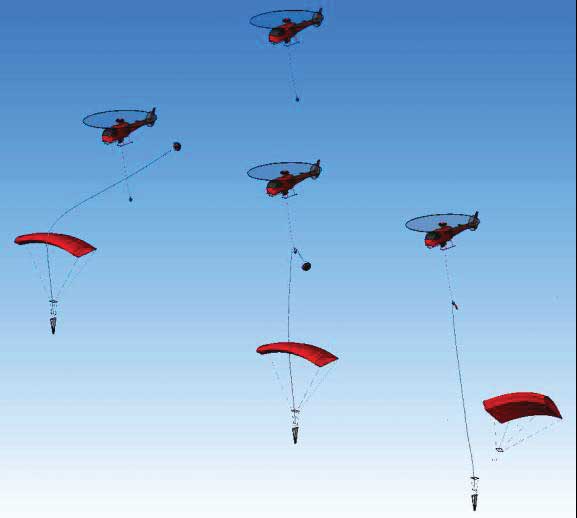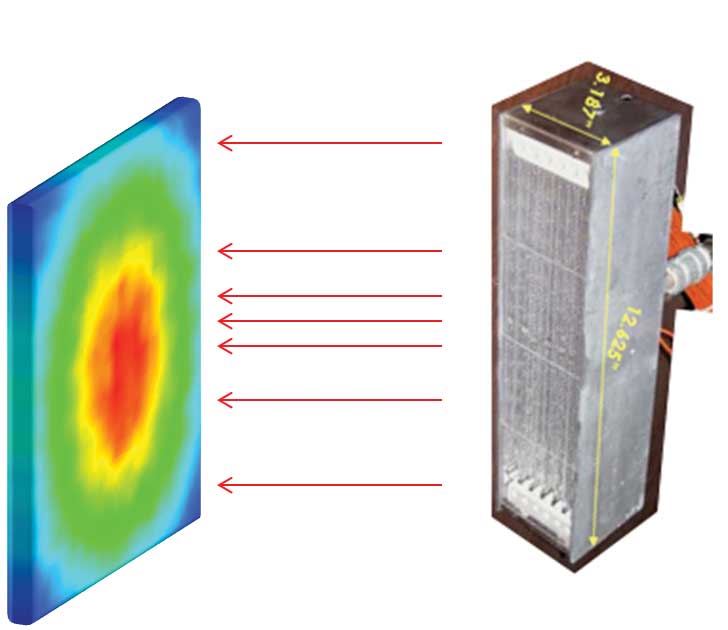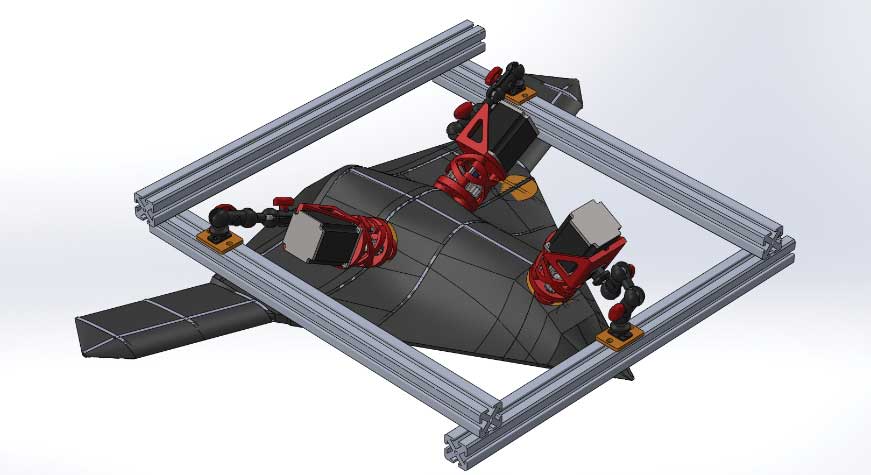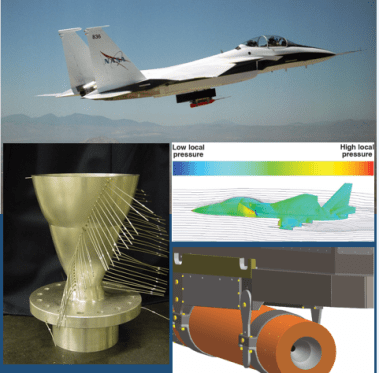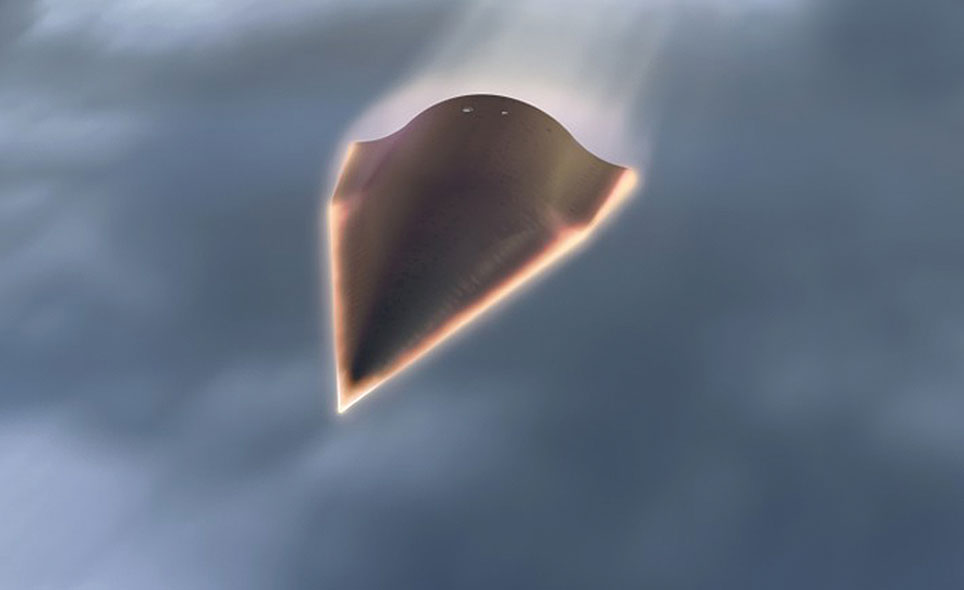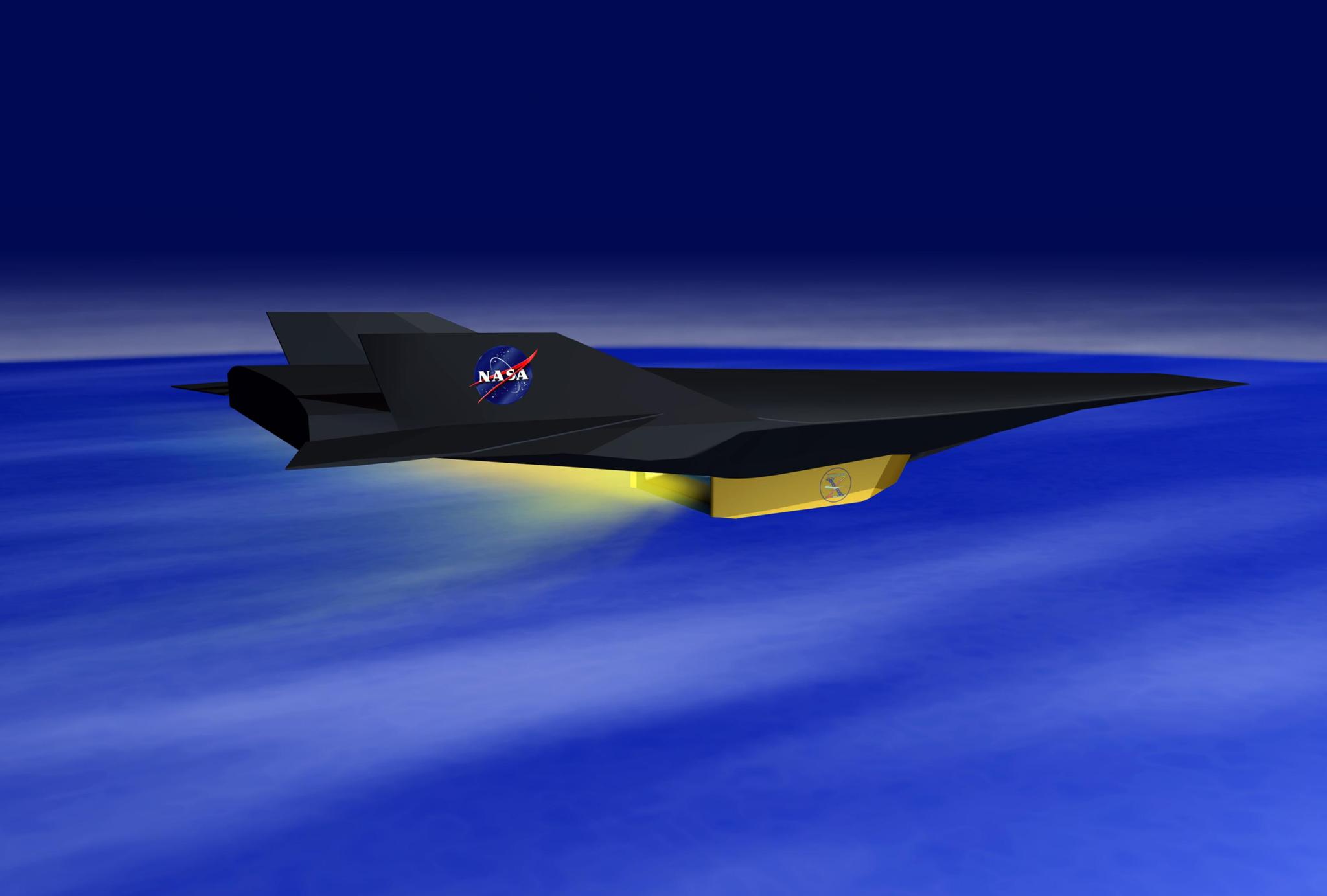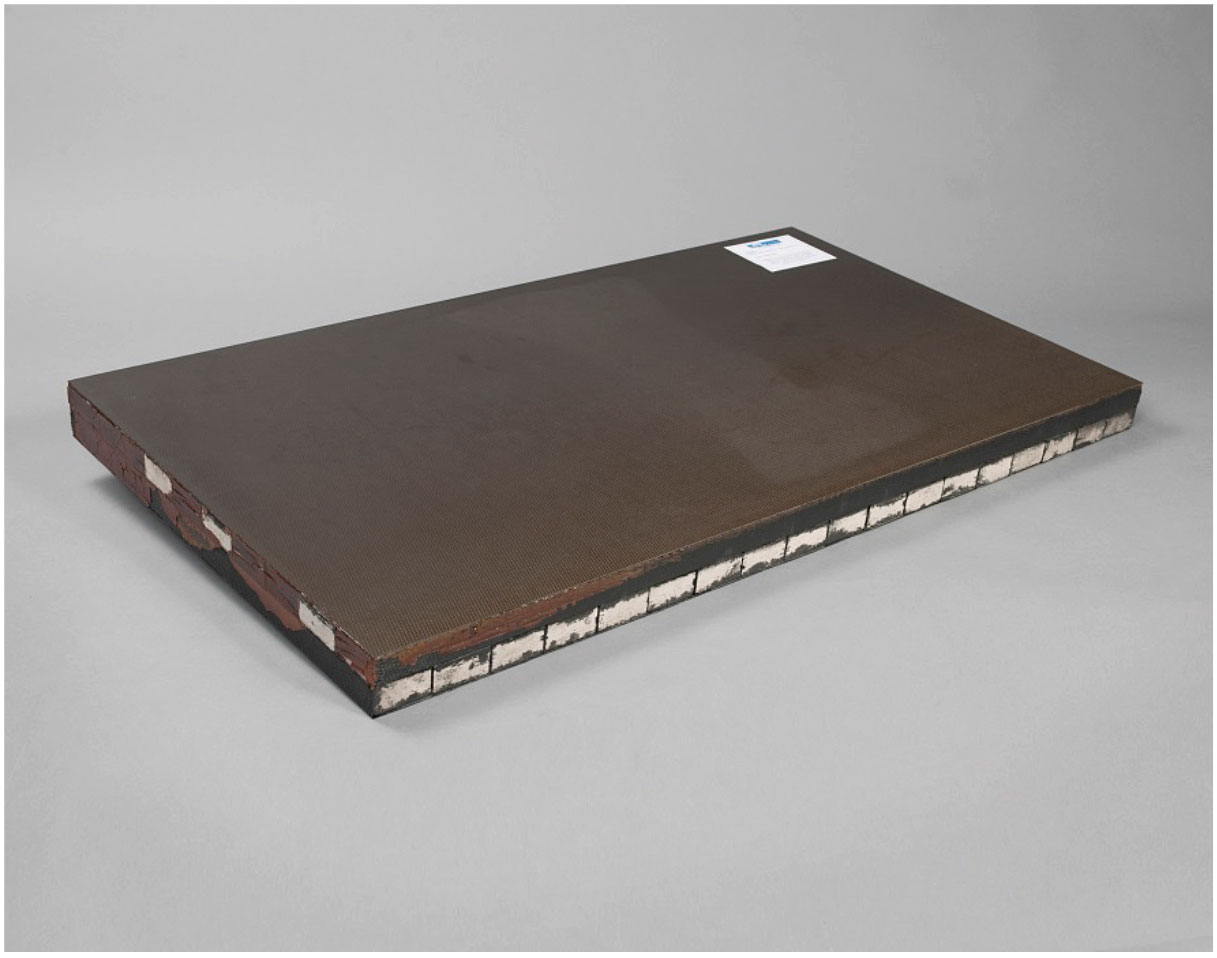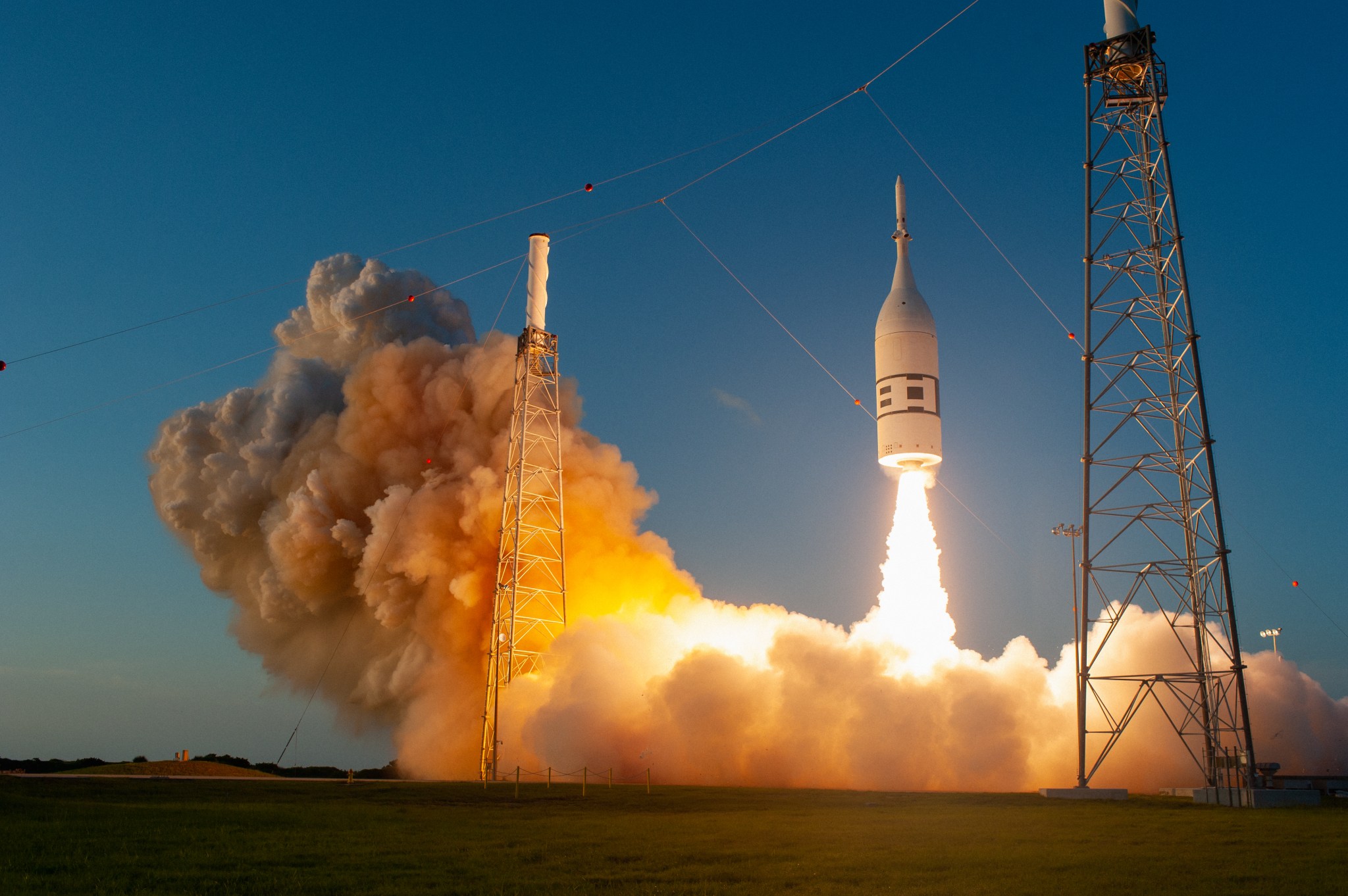
A key objective of space research at Armstrong is to leverage our center’s expertise in aircraft flight testing, instrumentation, avionics development, simulation, and operations to assist NASA with space exploration. Our researchers are discovering innovative ways to use aircraft to develop new space capabilities and test space technologies in a relevant environment.
Hypersonics research is important both for aeronautics and space research to enable extremely fast travel on Earth as well as for future space exploration. Armstrong has a long history of pioneering research in this area.
Mid-Air Retrieval
This research effort tested the capability of a textile-based load-limiting device (LLD) as part of a mid-air retrieval (MAR) system to recover valuable and heavy space assets that return to Earth. MAR offers a significant opportunity to reduce costs associated with rocket launches, as it enables the reuse of expensive components. In development for years, the MAR system is now in its third generation and offers low-speed, low-g retrieval of payloads suspended under a parafoil.
The device attaches to the cargo hook of a helicopter and prevents hook overload during payload capture and ferry. Selected for its reliability, light weight, and low manufacturing cost, the textile-based LLD has a variable stroke length that pays out during load transfer. If the maximum length is exceeded, the device safely separates the payload from the helicopter. This technology can be used for no-impact recovery of payloads weighing up to 10,000 pounds.
Work to Date
In 2018, with support from NASA’s Center Innovation Fund, contractor Airborne Systems developed and ground-tested a stitched textile-based LLD to verify its load- limiting characteristics. Thirteen samples of varying configurations were successful evaluated. Nearly half of the samples experienced webbing failure or damage and did not function properly the entire stroke. The testing identified a sample configuration that will reliably allow the LLD assembly to accomplish the most work without overloading the helicopter cargo hook.
Looking Ahead
Additional testing is required to evaluate whether increasing the number of energy modulators could increase payout force.
Collaborators
Airborne Systems and United Launch Alliance
Benefits
- Strong: Offers low-speed, low-g airborne retrieval of expensive assets weighing up to 10,000 pounds
- Safe: Protects the helicopter and crew by preventing overload of the cargo hook in the event of excessive capture loads
- Flexible: Accommodates different recovery weight payloads by adding or reducing the number of textile elements
Applications
- High-value reusable hardware
- Sensitive payloads that cannot survive shock impacts
PI: John Kelly | 661-276-2308 | John.W.Kelly@nasa.gov
Heat Flux Mapping System
The Flight Loads Laboratory at Armstrong uses radiant heaters to simulate thermal loads imparted to vehicle structures during hypersonic flight. Radiant heater layouts are used to apply a specific heat flux distribution to the test structure surface to match predicted flight conditions and measure the response of the test structure. Researchers at Armstrong have developed a technique to map the heat flux distribution by quantifying the heat flux distribution of the heater array and demonstrating how it changes with different characteristic parameters.
Work to Date
Testing occurred in spring and summer 2018. Two student interns performed the tests, analyzed the data, and aided in planning the work required to complete the effort. One student designed a heat exchanger that will be used to operate the test setup at higher energy output levels than previously achievable. Two engineers analyzed legacy instrumentation data quality and identified improvements required to obtain the data of interest. A computational model study was also performed to evaluate the contribution of each reflector face to the total heat flux distribution.
Looking Ahead
Research will continue in 2020. The team will continue to collect data on different lamp configurations, perform analyses to ensure data are valid, and interpret the results for application to a characteristic model useful for pre-test heater array design, pre-test prediction, and post-test analyses.
Benefits
- Visual: Provides a two-dimensional map of the heat flux distribution as a function of the characteristic parameters for a given configuration of radiant heaters
- Accurate: Increases the accuracy with which the heat flux distribution of a heater array can be quantified for the purpose of improving correlations
- Improved simulation: Enables design of an improved heater for more flight-like simulation during tests
PI: Chris Kostyk | 661-276-5443 | Chris.B.Kostyk@nasa.gov
Quantitative Thermal Imaging
Armstrong researchers developed a method for using conventional HSV cameras to make quantitative thermal imaging measurements for objects hot enough to emit in the visible spectrum. The advancement occurred during a project that required temperature measurements on metal particles ejected during an electrical arc event in vacuum conditions. Commercially available systems did not have the combination of high spatial resolution and high frame rates necessary to resolve the particles in both space and time to obtain the temperature measurements. Researchers determined they could use HSV cameras because the particles would be hot enough to emit in the visible spectrum and they would be able to eliminate sources of visible light during testing.
Work to Date
After calibrating the HSV with a blackbody source, measurements revealed the particles were larger and much hotter than anticipated and maintained their heat long enough to remain super-heated as they traversed the volume that would be occupied by an astronaut. Two different brands of high-speed cameras were used, with calibrations evaluated over several months for repeatability and stability. Noise sources also were evaluated. Researchers had an unexpected opportunity to image melting metal filaments with a known temperature, allowing the system’s measurement performance to be validated. Testing occurred in summer and fall 2018, and a final report was drafted in spring and summer 2019.
Looking Ahead
The team anticipates publishing a conference paper in spring 2020.
Benefits
- Visual: Provides a two-dimensional map of the heat flux distribution as a function of the characteristic parameters for a given configuration of radiant heaters
- Accurate: Increases the accuracy with which the heat flux distribution of a heater array can be quantified for the purpose of improving correlations
- Improved simulation: Enables design of an improved heater for more flight-like simulation during tests
PI: Chris Kostyk | 661-276-5443 | Chris.B.Kostyk@nasa.gov
Artemis Launch Abort Test

In the AA-2 flight test, a test version of the Orion crew module (CM) launched from Space Launch Complex 46 at Cape Canaveral Air Force Station in Florida. The launch occurred on a modified Peacekeeper first-stage rocket motor procured through the U.S. Air Force and built by Northrop Grumman. The Orion test spacecraft traveled to an altitude of about 6 miles, at which point it experienced transonic, high-stress aerodynamic conditions expected during ascent. The abort sequence was triggered, and in less than 180 milliseconds the abort motor fired to pull the CM away from the rocket. The attitude control motor flipped the capsule end-over-end to properly orient it. Then the jettison motor fired, releasing the CM for splashdown in the Atlantic Ocean.
Among Armstrong’s numerous critical contributions were systems engineering support; the AA-2 developmental flight instrument subsystem, which collected and transmitted all the engineering data; and an onboard separation video system that allowed the Orion engineering team to show that the 38 flight test objectives were achieved. Armstrong team members were on hand at the test to monitor data from the booster, the separation ring, and the video system as well as instrumentation from the CM and LAS.
Launch data were successfully downloaded from all 12 ejectable data recorders. The team has reviewed the data, which NASA will use for final certification that the LAS is safe for human space flight.
PI: Robert Clarke | 661-276-3799 | Robert.Clarke-1@nasa.gov
Patterned Magnets
Pyrotechnic separation events—such as those involving rockets and drones—are associated with shock and debris, requiring significant measures to protect payloads and aerostructures. Armstrong researchers are testing the feasibility of using finely patterned magnets to enable two-body separation events. If proven, hold-and-release mechanisms involving these flexible and versatile patented patterned magnets have the potential to revolutionize numerous aerospace activities.
Work to Date
Researchers have taken a two-path approach to demonstrate the feasibility and practicality of using finely patterned magnets from Correlated Magnetics as the basis for separation mechanisms. One path is the development of a heavyweight release mechanism that mimics traditional store-release equipment and has demonstrated a release of 200 pounds. The other path is the development of a lightweight reconfigurable release mechanism intended to hold onto various shapes at various angles. This unit has demonstrated a hold of a 10-pound mock drone. With both demonstration units, the magnet-based mechanisms smoothly release at a touch of a button and can be scaled up or down to accommodate the size of an attached body. The team has also prototyped a slim-line minimalistic mechanism to release a PRANDTL-M aircraft from a small unmanned aircraft.
Looking Ahead
With continued positive results, the team will investigate the feasibility of using these patterned magnets to reconnect stores—for example, individual drones that could reconnect to a drone mothership after mission deployment.
Benefits
- Safer and more efficient: Eliminates design time, costs, and safety measures associated with pyrotechnic separation events
- Versatile: Attaches to a wide variety of surfaces and object shapes
- Flexible and lightweight: Increases functionality of magnet systems, opening new application fields
Applications
- In-flight payload release
- Space assembly
- Multi-body separation
- Space docking
- Mothership-Drone release and recapture
PI: Paul Bean | 661-276-2451 | Paul.Bean@nasa.gov
Radiation Shielding System
Space radiation can penetrate habitats, spacecraft, equipment, and spacesuits. Minimizing the effects of space radiation exposure is one of the biggest challenges in keeping astronauts healthy and fit during space exploration. Many researchers have proposed forming large electromagnetic fields around a spacecraft to mimic the protection provided by Earth’s magnetosphere. The challenge in this approach is to develop a system that can distribute a sufficient magnetic field over a large volume while simultaneously being compact, lightweight, and power efficient. This research effort aims to develop an active radiation shielding simulation architecture that rapidly evaluates how magnetic fields can be oriented to effectively shield astronauts from radiation exposure.
Work to Date
Armstrong researchers designed a simulation architecture to evaluate magnetic active radiation shielding configurations that incorporate lattices of Helmholtz coil arrays located at a distance from a spacecraft. It was determined that individual rows of Helmholtz coils can be configured to have a magnetic field that points in either the positive or negative direction depending on the direction of the applied current through each coil.
Looking Ahead
Next steps are to integrate optimization algorithms into an overarching simulation architecture to reduce the time required to evaluate various shielding configurations, a primary challenge identified above.
Benefits
- Enabling: Facilitates evaluation of radiation shielding configurations to determine how magnetic fields can be oriented to shield spacecraft from harmful radiation
- Flexible: Enables testing of a variety of shielding configurations
Applications
- Spacecraft and habitats
- Space instrumentation and equipment
PI: Matthew Waldersen | 661-276-5708 | Matthew.Waldersen@nasa.gov
Altitude Compensating Nozzle
The Altitude Compensating Nozzle (ACN) project is focused on advancing the technology readiness level (TRL) of the dual-bell rocket nozzle by demonstrating this technology in a relevant flight environment during captive-carried flight under a NASA Armstrong F-15 airplane. The dual-bell nozzle has been predicted to outperform the conventional-bell nozzle, both analytically and through static test data. The ACN project has two primary objectives: (1) to quantify the performance benefit of the dual-bell nozzle and (2) to demonstrate explicit control of the altitude-compensating capability.
Work to Date
The project has completed several milestones, including: (1) completed a conceptual design of a dual-bell rocket nozzle system for use on an F-15 airplane, (2) developed a concept for actively controlling the dual-bell nozzle operating mode on a typical launch vehicle, and (3) completed a preliminary prediction of the F-15 external flow field with the dual-bell nozzle operating.
Looking Ahead
A three-phase flight plan has been developed, ultimately leading to reacting-flow operation of a dual-bell nozzle during captive-carried flight on an F-15 airplane.
NASA Partner Contributions
Marshall Space Flight Center is developing all nozzle test articles, including nozzles used in flight. Armstrong is developing all systems required for operating the nozzle during flight, including system integration with the F-15 airplane. The Kennedy Space Center Launch Services Program is providing support for this project.
Benefits
- Performance: The dual-bell nozzle is predicted to provide an increase in the payload mass to orbit for a launch vehicle.
- Safety: Active mode control is predicted to mitigate side loads on the engine.
PI: Daniel Jones | 661-276-3498 | Daniel.S.Jones@nasa.gov
Advanced Control Method
This research effort aims to develop software control algorithms that will correct for roll reversal before it happens. Roll reversal occurs when an aircraft is steered in one direction but rolls the opposite way due to aerodynamic conditions. The problem often compounds as a pilot attempts to correct for the motion by over- steering in the original direction, leading to uncontrollable roll. Unexpected yaw and subsequent roll reversal has caused the loss of high-speed, lifting body–like vehicles. The team has employed novel predictive software within adaptive controller technology to detect conditions likely to result in aircraft roll reversal and then automate compensating maneuvers to avoid catastrophic loss.
Work to Date
The University of Michigan’s retrospective cost model refinement (RCMR) control algorithm has been integrated into a flight simulator and tested with prerecorded, open source parameter data, which replicates the roll-reversal anomaly. A modified algorithm was provided to the Armstrong team, which integrated the RCMR algorithm into a six-degree-of-freedom simulation environment to test its ability to recover from unstable situations without having a priori knowledge of the instability. The control algorithm increased survivability by 12 percent.
Looking Ahead
Potential next steps include evaluating testing techniques to improve control law design for other algorithms and asking the University of Michigan to further tune the algorithm for improved results.
Partners
University of Michigan, other government research agencies, and aerospace firms
Benefits
- Operates independently: Unlike other standard control systems, this method allows for compensation and control of aircraft roll reversal without a priori knowledge of the dynamics.
- Improves safety: This technology is expected to prevent crashes that occur due to uncontrolled roll.
- Increases envelope: RCMR would enable planes to travel safely over a larger envelope.
Applications
- Hypersonic jets
- Lifting body–type space vehicles and reentry vehicles
PI: Timothy Cox | 661.276.2126 | Timothy.H.Cox@nasa.gov
Adaptive Guidance Algorithms
This research effort is exploring the development of an adaptive guidance system for hypersonic vehicles. Traditionally, guidance is preprogrammed before flight both for manned and unmanned hypersonic vehicles. However, this offline, preprogrammed approach is not optimal in the event of unexpected situations, such as aircraft aerodynamic shape changes or thermal constraints. An adaptive guidance system would include predictive algorithms that could detect conditions likely to result in dangerous situations and automate compensating maneuvers to avoid catastrophic loss.
Work to Date
Guidance and control algorithms have been tested in a simulator.
Partner
The Defense Advanced Research Projects Agency (DARPA) provided funding for this project.r.
Benefits
- Improves safety: An adaptive system could detect and compensate for unsafe and/or unexpected situations/environments.
- Increases envelope: The system would enable aircraft to travel safely over a larger envelope.
- Fuel efficient: The system would adapt to changing conditions to maintain the most fuel efficient flight.
Applications
- Hypersonic jets
- General aviation aircraft
Atmospheric Reconstruction
Armstrong researchers are participating in an ongoing effort to model high-altitude atmospheric environments in order to improve flight planning designs for high-speed vehicles. The primary atmospheric conditions of interest in the upper stratosphere and lower mesosphere include air density, temperatures, winds, pressure, and expected uncertainties. These conditions must be characterized and understood in order to ensure the safety of high-speed aircraft and the people inside them. Reliable upper atmospheric models contribute to better flight parameter choices for speed and altitude and enable faster, safer, and higher flights for ultrahigh-speed vehicles.
Work to Date
Armstrong provided an atmospheric reconstruction of the flight regime or best-estimate atmosphere (BEA) for NASA’s Hyper-X scramjet demonstrator, DARPA’s Hypersonic Technology Vehicle 2, the U.S. Army’s Advanced Hypersonic Weapon launched glider, and the U.S. Air Force’s X-51 hypersonic scramjet. Each of these projects has enabled the team to refine modeling and data collection capabilities.
Looking Ahead
The team is currently working on several projects: (1) detecting and mitigating atmospheric turbulence to improve aviation travel, (2) modeling the effects of radiation on pilots, (3) investigating how cosmic energies are affecting the atmosphere, and (4) developing sensors for in situ atmospheric measurements and transmitting these data to appropriate users.
Benefits
- Increased efficiency: Contributes to understanding of key parameters for ultra-high altitudes
- Improved safety: Helps designers and planners reduce risks associated with atmospheric reentry and radiation exposure
Applications
- High-speed aircraft test flight research
- Weather prediction and climate change research
- Global Positioning System (GPS) performance research
Thermal Protection System
An Armstrong research team has combined high-temperature insulative and advanced composite materials in a unique design to protect aerospace vehicles from both the high aerodynamic loads as well as high temperatures generated by reentry from space. This dual-purpose sandwich panel design carries both thermal and mechanical loads and increases the operational efficiency of hypersonic vehicle aeroshells. Conventional multi-use hypersonic vehicles typically use non-load-bearing insulation systems to thermally protect the vehicle while using an internal skeleton to bear the mechanical loads. The Armstrong-developed Structurally Integrated Thermal Protection System (SITPS) offers a combined advanced thermal protection system that is both structurally and volumetrically efficient. It uses high-temperature, ceramic-matrix composite and lightweight insulation materials. Incorporating the insulation within a more robust sandwich panel could significantly reduce the operational costs for preparing a vehicle for its next mission.
Work to Date
The team developed the materials and process to fabricate a 20×36-inch concept panel for a specific core design and mechanically tested it in a laboratory using three separate methods. The team also has developed a material database of SITPS strength and thermal performance characteristics. In addition, the team examined alternate sandwich core designs to increase the overall thermal and mechanical performance of the concept panels.
Looking Ahead
Next steps involve developing panel closeouts and panel-to-panel joints in addition to manufacturing curved SITPS panels.
NASA Partners
Langley Research Center and Glenn Research Center
Benefits
- Robust: Increases durability of the TPS, thereby decreasing maintenance time
- Strong: Offers higher structural efficiency
- Efficient: Permits the reduction of vehicle mass with its combination of thermal and load-bearing capabilities
Applications
- Multi-use hypersonic vehicles
- Aircraft exhaust-washed structures



























